In this video, “What Is Translanguaging?” Ofelia Garcia of the CUNY Graduate Center overviews the concept of translanguaging: the way that language users deploy their full set of linguistic resources when making meaning, thereby challenging the social and political distinctions that many people make between the existence of several distinct and separate “named languages” (i.e. English, French, Spanish, Mandarin). García explains why the act of translanguaging is epistemologically different from the act of code switching, since code switching validates the existence of separate, distinct, coherent “codes.” She also explains why a translingual approach to teaching is still possible for people who do not share all of the features of their students’ linguistic repertoires by adopting the stance of being a co-learner, and gives some specific examples of a more holistic approach.
In this video on "Translanguaging," Ofelia García discusses the distinction between multilingualism, plurilingualism, and translingualism. She explains the way that translingualism (1) adopts the epistemology of a multilingual person by (2) challenging the concept of “named languages,” or languages that have artificial political boundaries. This is different from multilingualism and plurilingualism: two linguistic philosophies which treat the concept of named languages as a fact rather than as an ideological construct.
This video, the first of Sara Vogel's series “Teaching Bilinguals (Even If You’re Not One),” shows specific examples of how teachers who have adopted a translanguaging stance in their classrooms in New York City and New York State actually do the work that they do, especially when they don’t share their students’ linguistic repertoire
Appropriateness / appropriacy-based approaches: Appropriateness, according to Nelson Flores and Jonathan Rosa (2015), is a language ideology through which appropriate speakers emerge
Code switching: The term "code switching" assumes that languages are separate; "code switching" occurs when a speaker switch back and forth between more than one language
Code meshing: Two or more different languages interacting with each other in writing or speech
Languaging: When we use all our semiotic resources to produce meaning, we are languaging
Linguistic ideologies: Linguistic ideologies describe how languages shape our ideologies and conceptualization of languages
Named languages: "Named languages" are languages that are sanctioned by institutions/nation states, such as Vietnamese, Spanish, or English (Otheguy, García, and Reid, 2015).
Raciolinguistic ideologies: "Our conception of raciolinguistic ideologies," write Nelson Flores and Jonathan Rosa (2015), "links the white speaking and listening subject to monoglossic language ideologies, which position idealized monolingualism in a standardized national language as the norm to which all national subjects should aspire” (p. 151).
Translingualism: Translingalism is a dialogical process and languages are constantly in dialogue with each other (Horner et al. 2011).
Translanguaging: Ricardo Otheguy, Ofelia García, and Wallis Reid (2015) define translanguaging as “the deployment of a speaker’s full linguistic repertoire without regard for watchful adherence to the socially and politically ... defined boundaries of named languages” (p. 283) .
The white listening subject: The term "white listening subject" refers to those who hear and interpret the linguistic practices of language-minoritized people. The white listening subject does not have to be white.
